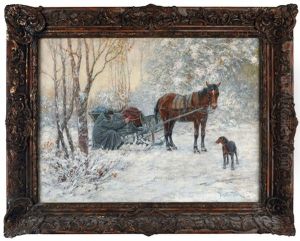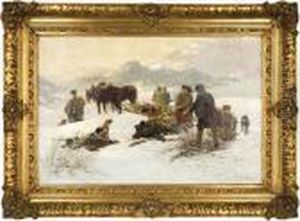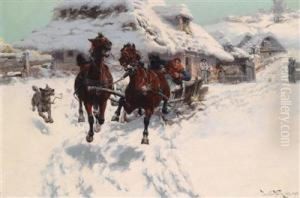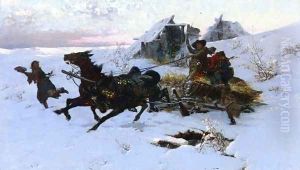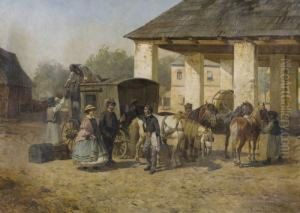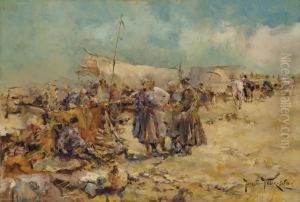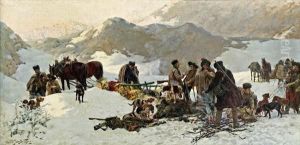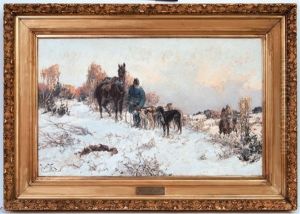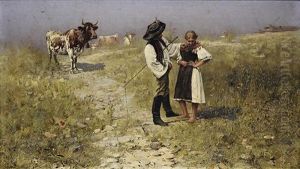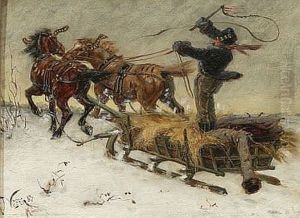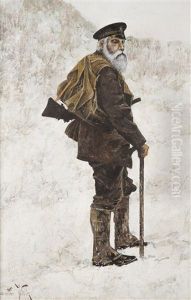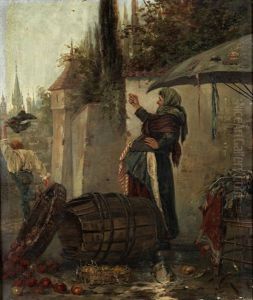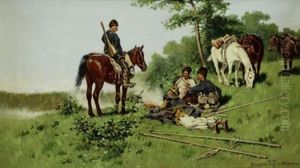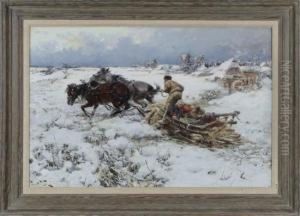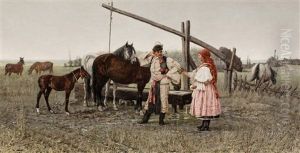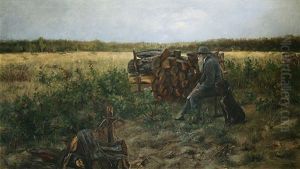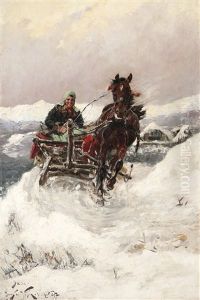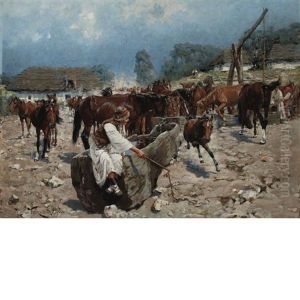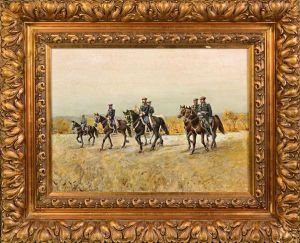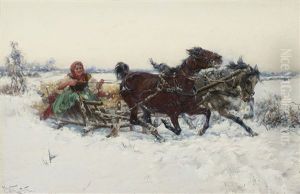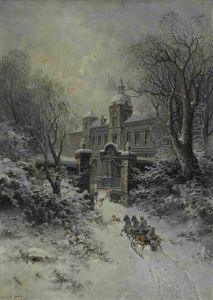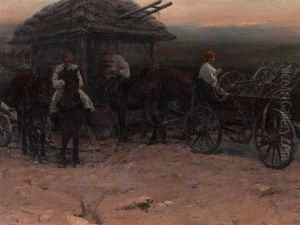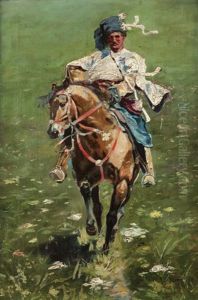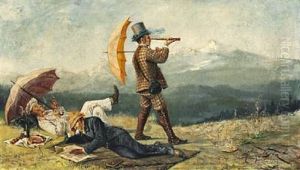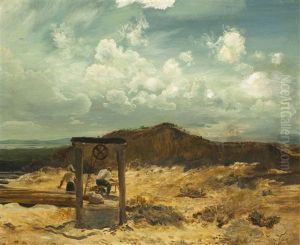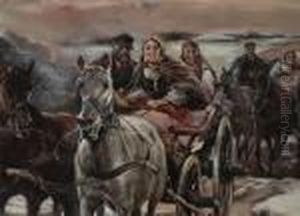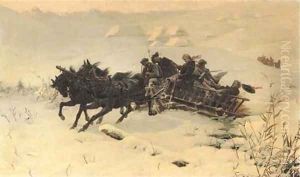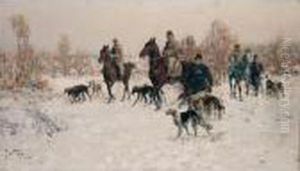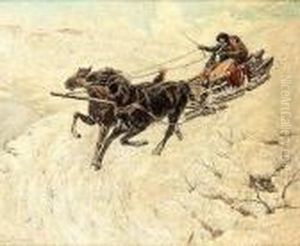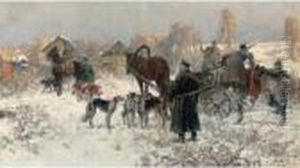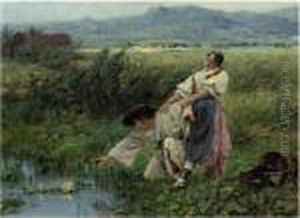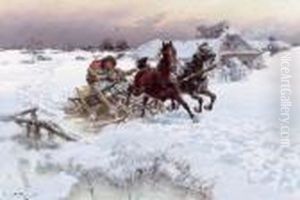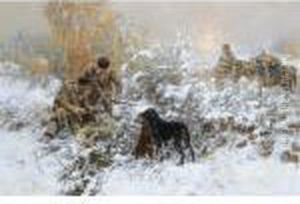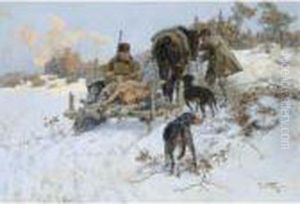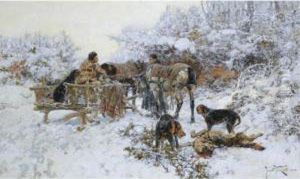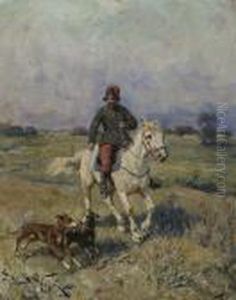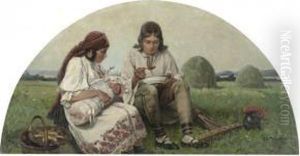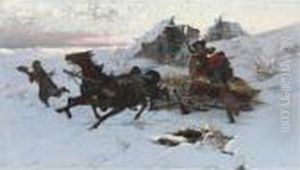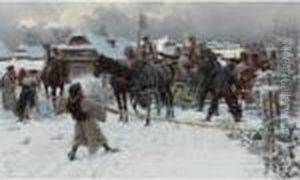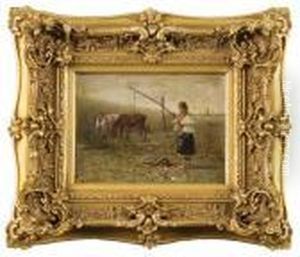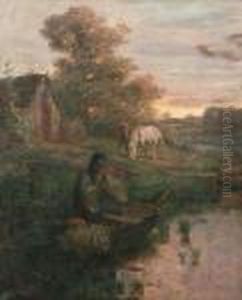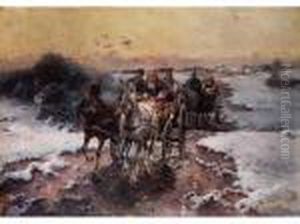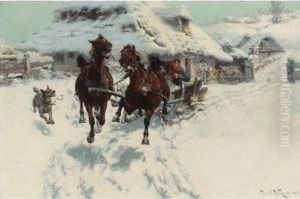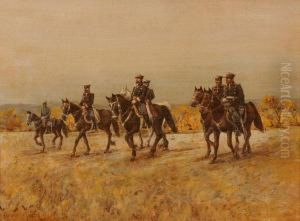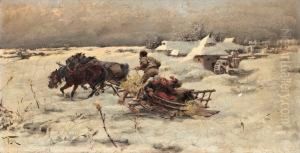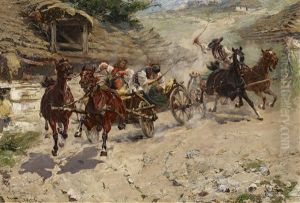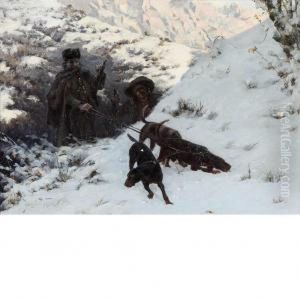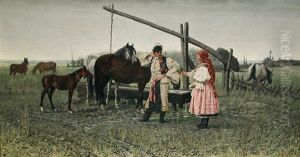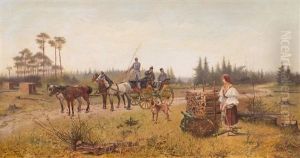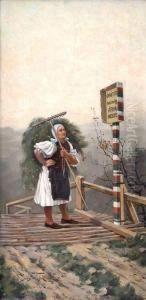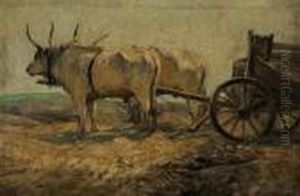Jaroslav Friedrich Julius Vesin Paintings
Jaroslav Friedrich Julius Vesin was a Czech painter and illustrator, born on February 27, 1860, in Prague, which was then part of the Austro-Hungarian Empire. He is known for his contributions to the National Theater in Prague and for his portrayal of historical and mythological subjects.
Vesin was educated at the Academy of Fine Arts in Prague under the tutelage of renowned Czech artists such as Maxmilián Pirner and Václav Brožík. His artistic style was influenced by the Academic art of the period, which emphasized traditional techniques and often depicted classical themes.
Throughout his career, Vesin became particularly well-known for his historical and allegorical paintings. His works often reflected a sense of national pride, which was a significant element in the Czech National Revival movement during the 19th century. This cultural and political movement aimed to revive Czech language, culture, and national identity within the Austro-Hungarian Empire.
One of Vesin's most notable contributions was his work on the decorations of the National Theater in Prague, where he created several murals and other decorative elements. These works are considered important in the context of Czech cultural history, as the National Theater was a symbol of Czech artistic and national aspirations.
Vesin's illustrations also gained recognition, particularly those for literary works by famous Czech writers, including Alois Jirásek. His illustrations helped to visualize the rich narratives of Czech folklore and history, contributing to the broader cultural project of Czech national identity formation.
Despite his success, Vesin's life was marked by personal tragedy. His work gradually fell out of favor as artistic tastes shifted towards modernist styles in the early 20th century. He struggled with financial difficulties and his health began to decline. Jaroslav Friedrich Julius Vesin passed away on April 3, 1915, in Prague. His legacy, however, lives on in the Czech Republic, where his works are still appreciated for their historical significance and craftsmanship.
